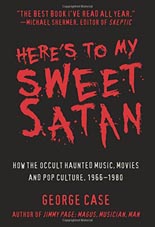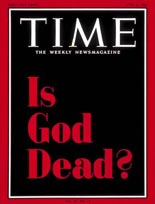
 One of my favorite books from last year, Spectacular Optical’s Satanic Panic, did a thorough job of looking at one 1980s trend as peculiar today as Jams and parachute pants: the widespread hysteria among preachers, teachers and suburban creatures that Dungeons & Dragons and heavy metal and the like were corrupting our children. It is an excellent read that comes at its subject from a multitude of angles.
One of my favorite books from last year, Spectacular Optical’s Satanic Panic, did a thorough job of looking at one 1980s trend as peculiar today as Jams and parachute pants: the widespread hysteria among preachers, teachers and suburban creatures that Dungeons & Dragons and heavy metal and the like were corrupting our children. It is an excellent read that comes at its subject from a multitude of angles.
But that feverous movement is just one portion of a far larger story; full-blown, coast-to-coast delirium doesn’t just happen overnight. After all, tales of devilish temptation are as old as the Book of Genesis, so how did these media items become public enemies? George Case looks at the sordid, start-to-finish tale in Here’s to My Sweet Satan: How the Occult Haunted Music, Movies and Pop Culture, 1966-1980. Don’t let the serial killer-looking cover scare you away.
Why jump in at 1966? Because that’s when, on its April 8 cover, Time magazine famously inquired, “Is God Dead?” As Case notes in his introduction, “After World Wars I and II, fascism and the Final Solution, and the atomic bomb, the presence of a benign God watching over humanity became less plausible to the average mind than ever.”
 As restrictions on media slowly laxed, especially with regard to the MPAA, creatives increasingly pushed the envelope in turn, resulting in such zeitgeist magnets and game changers as Rosemary’s Baby, The Exorcist and The Omen; the early novels of Stephen King; a host of rock records, from The Beatles’ Sgt. Pepper album to Blue Öyster Cult’s “(Don’t Fear) The Reaper.”
As restrictions on media slowly laxed, especially with regard to the MPAA, creatives increasingly pushed the envelope in turn, resulting in such zeitgeist magnets and game changers as Rosemary’s Baby, The Exorcist and The Omen; the early novels of Stephen King; a host of rock records, from The Beatles’ Sgt. Pepper album to Blue Öyster Cult’s “(Don’t Fear) The Reaper.”
With each piece of media earning its own “making of” story, all of these and more paved the way to “redirect the middle of the road to the occult,” eventually leading to PMRC LP bonfires and hysteric vilification of mazes and monsters — the aforementioned “satanic panic,” to which Case devotes the seventh and final chapter. Structurally simple but effective, the chapters before that segregate the subsets of motion pictures, music and literature from one another. Even greasy kids’ stuff à la Ouija boards, horror comics and Count Chocula cereal earns a section of its own.
No matter the chapter and from the very beginning, the author approaches his main topic for what it really is: one big business. (We could gauge just how big if only we were privy to the tax returns of Alice Cooper, Gary Gygax and Bill Blatty.) He writes, “While Black Masses, evil spirits, and poltergeists continued to bring customers to the Warlock Shop and the Metaphysical Center, they were also ringing up sales at pharmacies, airports, malls, and department stores.”
By now, I assumed that everything there was to be told about, say, The Exorcist, had been told long before. I was wrong. With Case’s examination of that 1973 Oscar-winning blockbuster and other artistic works that leveraged Christian America’s fear of the unholy into big bucks, there’s real heft to Here’s to My Sweet Satan: factually, culturally, intellectually. —Rod Lott
